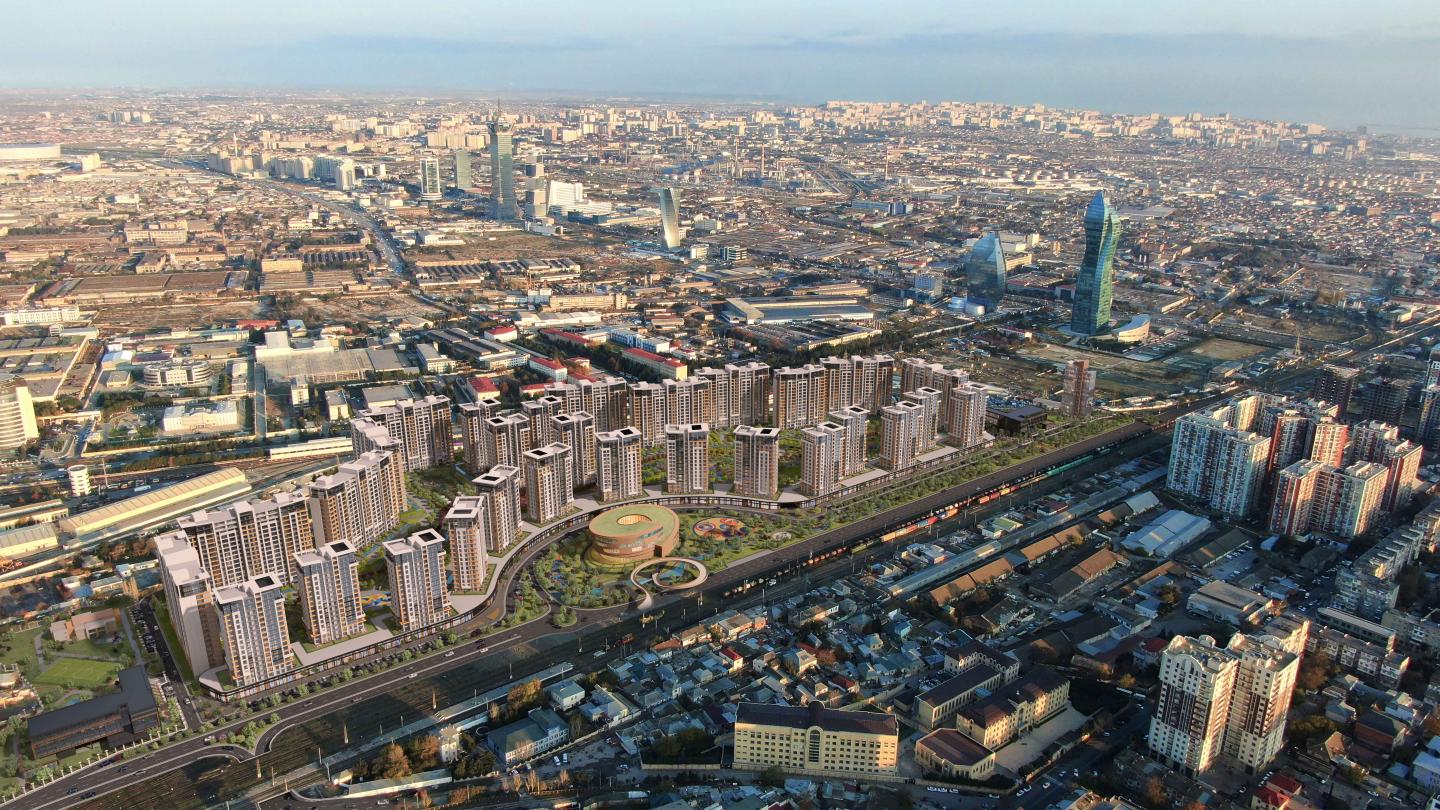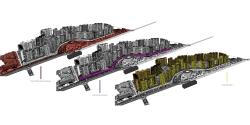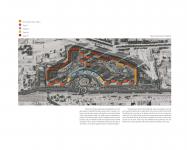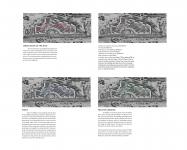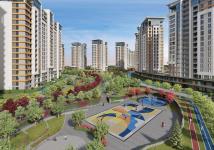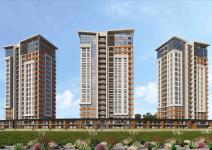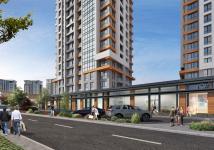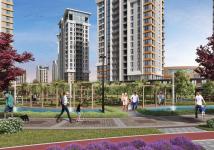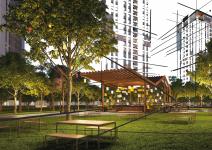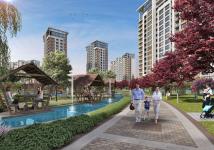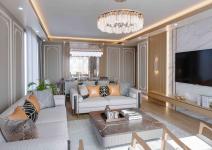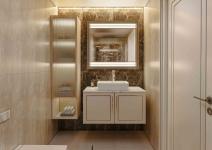Project site is located in Nerimanov district of Baku which is the capital and the largest city of Azerbaijan.
The typology of buildings are as follows; residential areas, commercial plinth, health department and the Mall which has social amenities. These typologies are constructed according to the use case scenarios of the users of the project. There are 29 residential complexes, 4 educational complexes, 42 commerce units, 1 health unit and 1 Mall complex, which all have been designed with the target audience in mind. The main elements of the layout can be defined for their purposes. The commerce units are extroverted since they are situated on the axis which provide access to the city and they are planned with a strong connection to the transportation axis. The health unit is situated as a continuation to the commerce unit and provide services both the residential users and external users.
Residential ares are divided into 2 phases by the inner axis that has entry through the restricted access commercial axis. The two phases has the same layouts. The main criteria while designing the residential area are;
- In the area two types of homes, one being an urban dwelling and the other being a recreational, gardened town house are common. 70% of the project’s land is left for the construction of this fact in mind, as homes with garden access and greenery. The layout of the project is created in consideration with the local habits of the habitants.
- The layout is created in consideration with the windy nature of the site, so the buildings can act as wind breakers and can give users maximum use of daylight.
- In order to create necessary privacy for the habitants, facades of the buildings are designed accordingly.
There are open parking spaces and parking garages designed according to the appropriate use case scenarios. The distinction being long term and short-term parking, for the residents there are parking garages for long term parking with restricted access and open-air parking spaces designated for the users of the commercial and social areas which is considered more sporadically use case scenarios. Because of the layout of the residential areas and the restricted access, the entry point is designed through the common garden area. For the plinth residential axis though, the doubles villas have private entry points. Because the public can use the commercial axis, health department and the social amenities, the entry point is designed to be free and in accordance with the city’s scale.
Buildings for schooling are situated on the southwest and the south-east parts of the lot and are separated from the rest of the lot with the residential area and vehicle and pedestrian axis’.
There are 5 types of apartments designed for the target audience ranging from apartments with a 1 1 layout to 4 1 layout and also apartments with garden access and doubles villas with garden access. The most common residential typology in the entire project is type E buildings with 3 1 and 4 1 layouts. Type E residential areas are designed with crowded families in mind. Type B residential apartments provide an alternative on the inner garden and the commercial plinth.
Whereas type D2 and D3 residential areas are designed towards less crowded families and/or single adults with a need to satisfy their social life habits and an access to the garden and the axis for the commercial/urban axis. The idea behind ground floor apartments and the residential axis of the plinth having an access to the garden is trying to create a new culture for the area. That’s why the residential area towering over the plinth have rooftop gardens which the penthouse residents can enjoy.
PLANS
The history of construction of mass housing projects and architecture of mass housing spans over 80 years in Azerbaijan. During this time, local social and economical requirements have changed and Azerbaijani architecture has developed in to new horizons. The residential architecture in Baku during the 19th century has been affected by the industrial revolution and Soviet Union’s mass residential construction policies.
A welcoming area with premium features is designed for each residential block. Even though entry to the area is restricted, extra security measures are taken in the welcoming area of each residential block. The apartments can be accessed with vertical circulation and are designed according to local fire laws. The main factor in the layout type is creating maximum efficiency to enjoy the view without disturbing the neighboring habits of the habitants while conserving privacy.
The main criteria while designing the apartments was an idea hoped to be common in the area’s residential space use cases while leaving the Soviet Culture’s dispersing foot traffic to different rooms through one entry point’. For daily and entertaining use cases living room and kitchen areas are connected to the hall whereas more intimate parts of the living space such as bedrooms are situated towards the back of the apartments. The residents are all designed with big empty spaces to take advantage of the view and daylight intake.
All apartments are fitted with a balcony considering the changing nature of people’s daily lives due to the pandemic. All boilers are situated on the balcony and camouflaged in to the façade of the buildings to create a more pleasant sight and to keep the use of explosive and dangerous materials away from the living areas. The decorative cupboard situated on the balcony also houses the natural gas intake lines and air conditioning units. Even though it is not considered a big problem in the area’s culture, soundproofing and insulation amongst the apartments are implemented.
2020
Site Area : 209.621 m2
Total Housing Construction Area: 530.387 m2
Total Non-Housing Construction Area : 72.335 m2
Gross Housing Construction Area: 414.190 m2
Gross Non-Housing Construction Area: 50.495 m2
Aslı Architecture
